Reducing waste in the kitchen is one of the most important ways to keep your food budget in check. Tossing uneaten food into the garbage is just as good as throwing handfuls of cash in the trash, and I don’t know anyone who can afford that (if you can, feel free to throw it in my direction instead of into the garbage, k thx.). Freezing food gives you more time to find uses for your food before it spoils, so I’ve experimented with freezing all sorts of foods and ingredients over the years. After plenty of hits and misses, these are the 10 foods I freeze most often to save money and reduce waste in my kitchen.
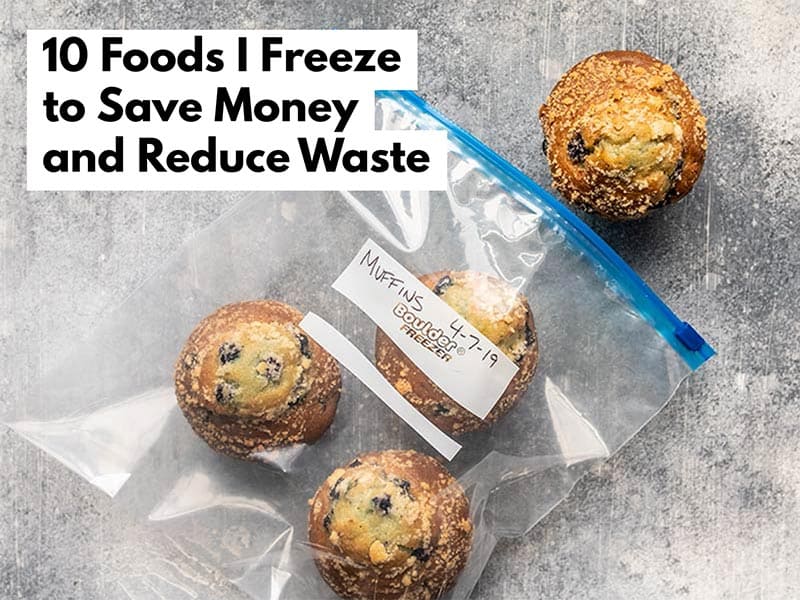
This post contains some affiliate links, which means that we make a small commission off items you purchase at no additional cost to you.
But before I get into the foods that I like to freeze, here are a few general tips for freezing food.
Quick Tips for Freezing Food
- Exposure to air is the enemy because it causes moisture to evaporate from your food, which results in freezer burn. So, wrap food tightly, use heavy duty plastic, and remove as much air as possible from bags when possible.
- Chill hot food completely in the refrigerator before transferring it to the freezer. Placing hot or warm food straight into the freezer causes larger ice crystals, which will damage the texture of the food more.
- ALWAYS label and date your food. It’s preemptive strike against frozen mystery packages in the back of your freezer, which will undoubtably end up in the trash.
- Bookmark this chart of storage times for food in the refrigerator and freezer. This will help you determine how long to keep the items in your freezer. And here is a more extensive resource for best practices when freezing food.
10 Foods I Freeze to Save Money and Reduce Waste
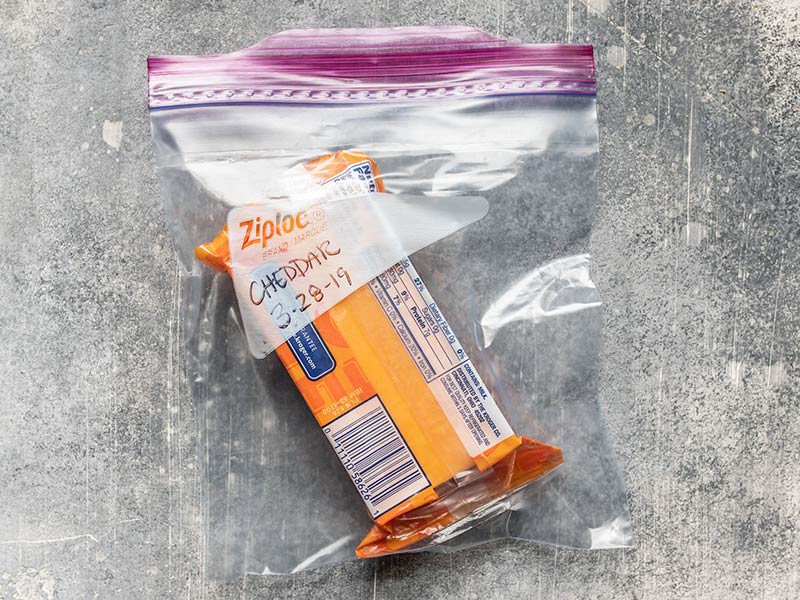
1. Cheese
Cheese is always one of the more expensive ingredients I use, so I make sure not to waste a single crumb! Plus, it’s often much less expensive if purchased in a larger quantity, like 16 oz. block or a 2 lb. bag of shreds. Luckily, cheese freezes great! You’ll notice very little, if any at all, difference in the texture after freezing and thawing. Block cheese may become slightly more crumbly, so it’s not as good for making sandwich slices, but it’s still great for shredding, melting, and other uses.
When I buy a large bag of shreds, I first divide it up into smaller portions, usually 2 cups, and freeze them individually. To thaw, I simply transfer them to the refrigerator one day before I intend to use them. I do the same for block cheese. If I buy a large block, I’ll first divide it into 8oz. portions, like the usual blocks for sale, wrap them tightly in plastic, then place them in a freezer bag. If I’m freezing a half block, like in the photo above, I’ll leave the original plastic on the cheese because it fits so tight and close to the cheese, then place the whole thing in a freezer bag.
Cheese varieties I’ve successfully frozen: cheddar (shredded and block), chevre (soft goat cheese), feta, swiss, Monterey jack/pepper jack.
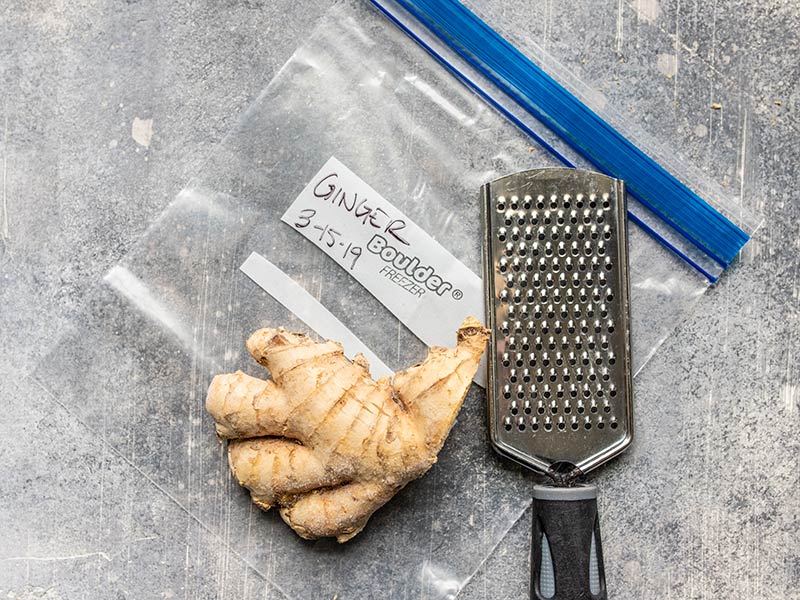
2. Fresh Ginger
I cook a LOT with ginger, but it gets soft and rubbery pretty quickly in my refrigerator. The solution? Keep a knob or two in the freezer! The flavor is exactly the same and frozen ginger grates much easier than fresh, since the hairy fibers break easily instead of clogging the grater.
You don’t have to peel your ginger before it’s used, but I do suggest washing it well to make sure there is no dirt in the nooks. If you prefer to peel your ginger, peel it before freezing. I use my ginger so often that it doesn’t have much of a chance to get freezer burn, so I simply pop it into a freezer bag. If you use your ginger a little less often, you may want to wrap it tightly in an extra layer inside the freezer bag.
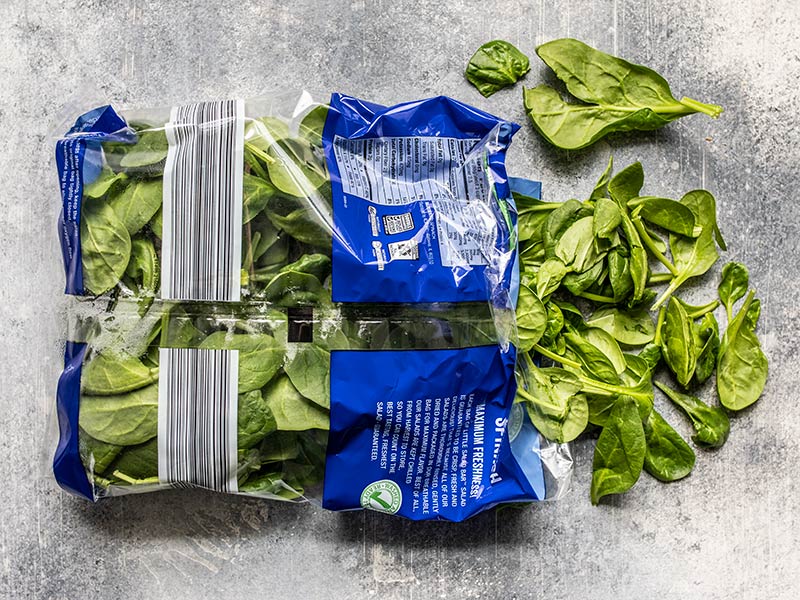
3. Fresh Spinach
We’ve all done it. Ambitiously bought a bag of spinach only to watch it slowly wilt in your fridge. Try as I might, it’s not often that I successfully finish an entire bag of spinach before it gives up its life. So when I see the spinach starting to sputter out, I’ll just place the whole bag right into the freezer. Yep! No prep needed, just put it in the freezer (inside a sealable bag).
Obviously the frozen spinach isn’t good for salads, but it works perfectly for smoothies, adding to soup, sauces, or sautéing (because it wilts when cooked anyway, right?). And because the spinach is so delicate and not dense, I don’t even thaw it before adding to my meals. It goes straight from the freezer to the soup, sauce, or wherever it’s being used.
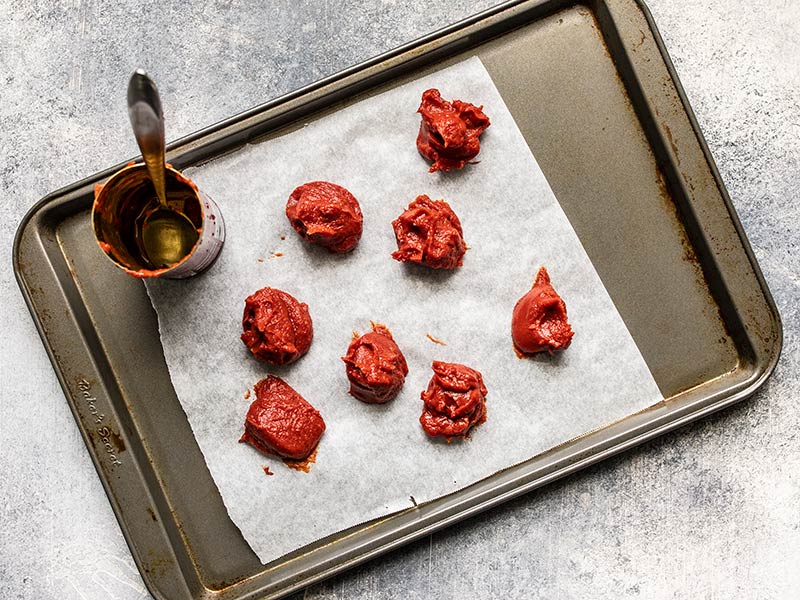
4. Tomato Paste
If you’ve been around Budget Bytes for a while, you probably already know that I freeze my tomato paste. But, since this one was such a game changer, I want to make sure anyone new here knows this trick. Most recipes only use one, or a few, tablespoons of tomato paste at a time, but one small 6oz. can of tomato paste has about 10 tablespoons in it. So what do you do with the rest? Well, you DON’T throw it away.
Portion it out into one tablespoon scoops, place them on a parchment lined baking sheet or plate, then freeze until solid. Once solid, transfer to a freezer bag. Then, whenever you need tomato paste for a recipe you can grab one, or however many you need. Again, because they’re so small, I don’t even thaw them. They go straight into my soup or sauce frozen. (See the full post: How to Freeze Tomato Paste)
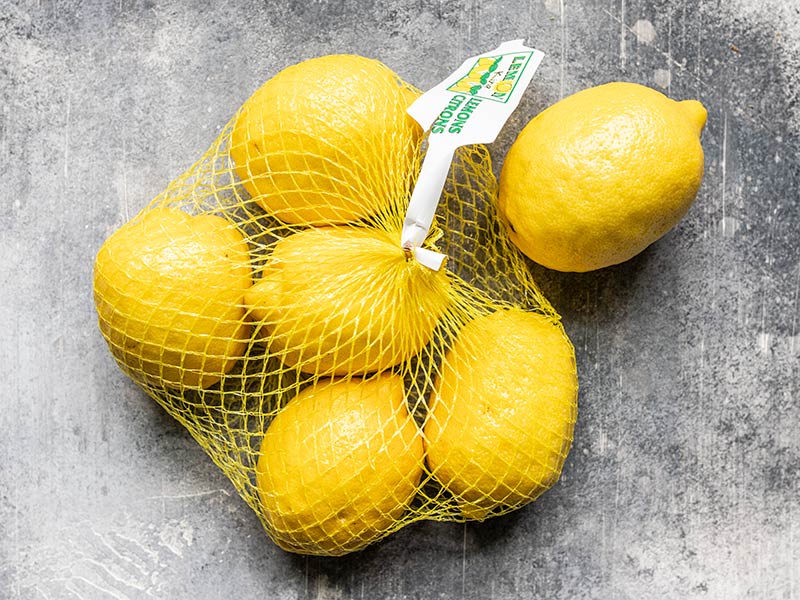
5. Fresh Lemons and Limes
Okay, this one was a recent game changer for me as well. I love cooking with fresh citrus because it can absolutely transform a dish, but it’s also quite expensive. So when I learned that you can freeze whole lemons and limes for juicing and zesting later, I was finally able to take advantage of the steep discount offered when buying a whole bag instead of one at a time. The texture of the citrus does change once thawed, so you won’t want to use them for slicing or garnishing, but they’re absolutely perfect for zesting and juicing. For more detailed instructions and tips, read my post about How to Freeze Whole Citrus.
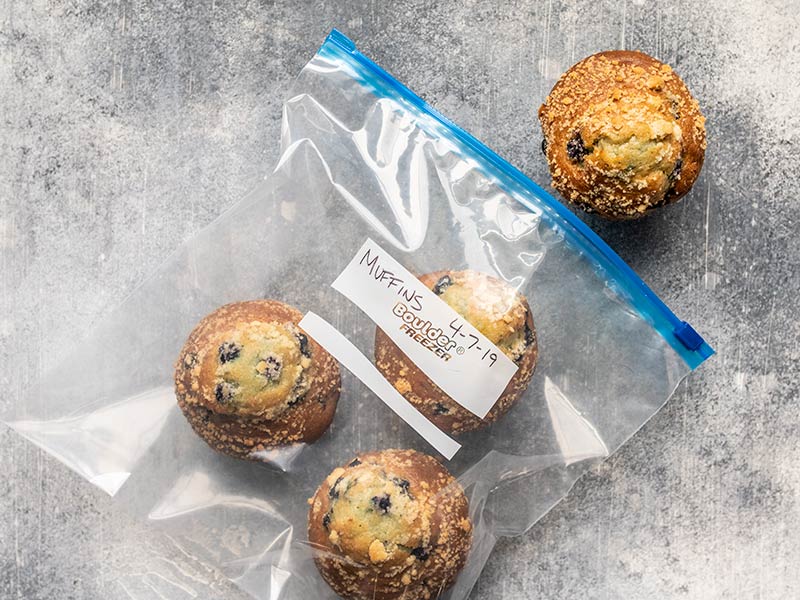
6. Bread and Baked Goods
I freeze my bread and baked goods for two reasons: to slow it from molding and to slow me down from eating it so fast! 🤣 When I lived alone, freezing my loaves of sliced bread was a life saver. Instead of having to buy a new loaf every week, I could slowly work on one loaf all month long without it going moldy. Just take a couple slices out at a time, pop them straight into the toaster from the freezer, and you’re good to go. As long as the bread is not too delicate the slices separate quite easily when frozen. If you prefer the bread untoasted, just let it sit at room temperature for about 10 minutes.
Dinner rolls, garlic bread, biscuits, muffins, croissants, quick breads (like banana bread or zucchini bread), tortillas, and just about any other bread item you can think of all freeze beautifully. There are no texture or flavor changes, and most thaw very quickly at room temperature. If your items are home baked, make sure to let them cool completely before freezing to prevent condensation and ice crystals.
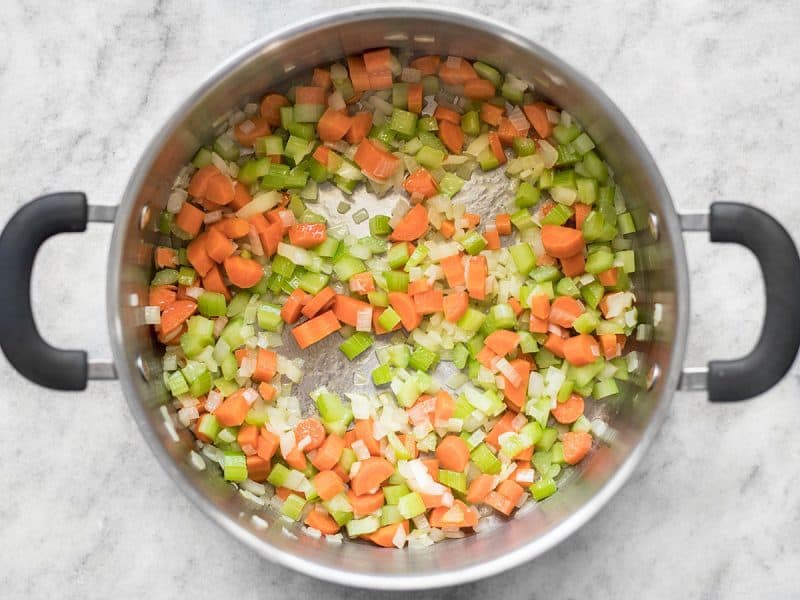
7. Leftover Vegetables
I don’t know if I’m the only one, but I always seem to have a half bag of carrots and a half bunch of celery in my fridge. Sometimes I chop them into sticks for snacks throughout the week, but the rest of the time I chop and freeze them to use in soup later. Many soups start with a mirepoix, or a mixture of onion, celery, and carrot. So it makes sense to pre-chop and freeze this mixture ahead of time, then you can just dump them into the soup pot later. Since the vegetables will get soft when sautéed anyway, the softening that occurs from freezing and thawing isn’t noticed.
This can also be done with a mixture of bell peppers and onions, which I like to sauté for use in omelets and sometimes pasta dishes. Or you can do a Holy Trinity mix (bell peppers, onion, celery), for use in Cajun style dishes.
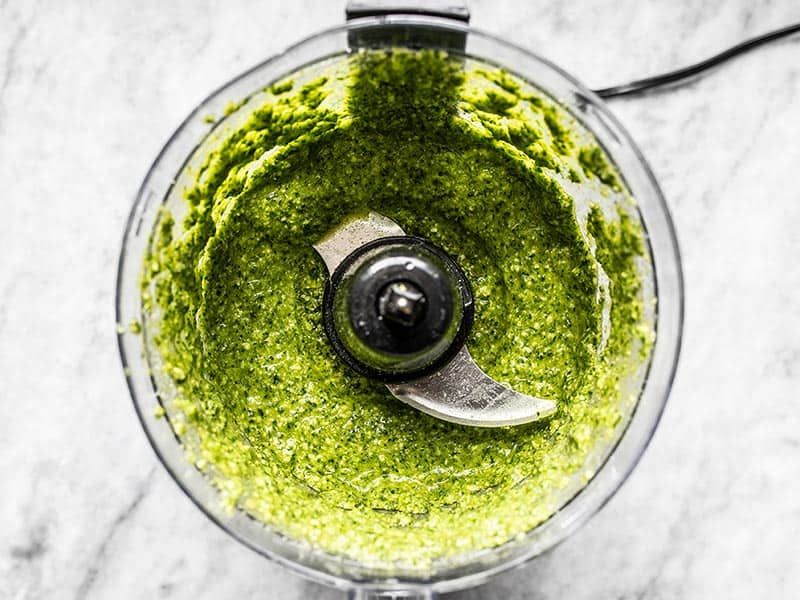
8. Pesto
Whether store bought or homemade, pesto freezes great! Which is awesome because it’s another one of those ingredients that is pretty expensive and seeing it go to waste is an absolute tragedy. To freeze your pesto, spoon it into an ice cube tray and freeze until solid, then transfer to a freezer bag for longer storage. Or, spoon it into a freezer bag, remove as much air as possible, and spread the pesto flat. Freeze it in a flat layer in the bag, then pieces can be broken off and thawed as needed.
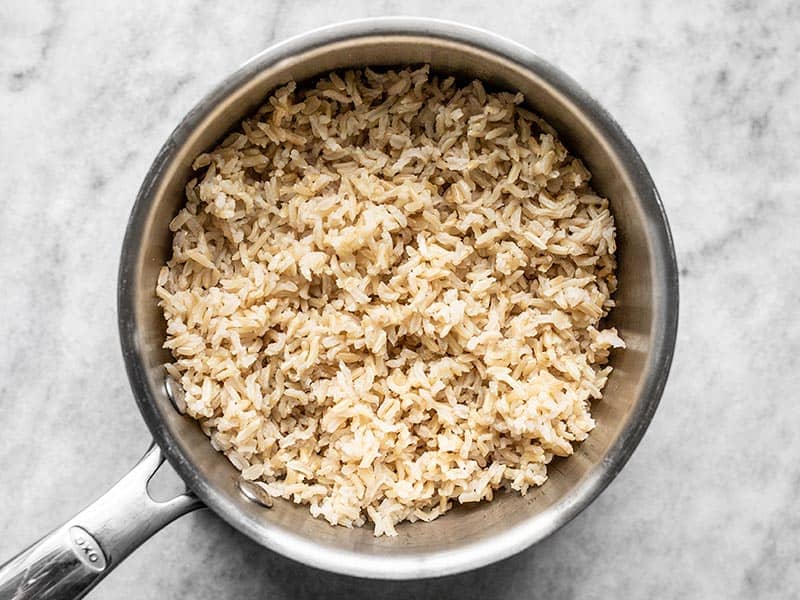
9. Cooked Rice and Grains
Batch cooking your grains, especially those with a longer cook time like whole grains, can save you a lot of time later. Cook up a large portion of rice, bulgur, quinoa, or whatever your favorite grain is, then divide into single serving portions, chill completely in the refrigerator first, then transfer to the freezer for long term storage. The frozen rice or grain thaws quickly in the microwave so you can make a fast bowl meal any night of the week!
The trick to keeping the cooked rice or grain safe is to cool it quickly and immediately after cooking. Dividing it into smaller portions before chilling ensures that it will cool fast and prevent bacterial spores from budding. I typically use quart-sized freezer bags to freeze my rice portions, again removing as much air as possible from each bag.
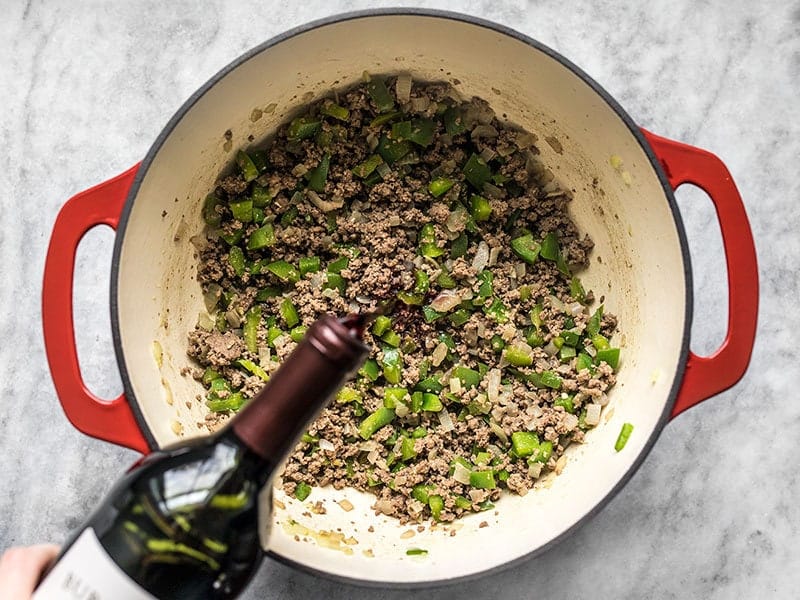
10. Wine
If you’re a lightweight like me and can’t finish a whole bottle of wine in one sitting, freezing the leftovers for cooking is a really smart trick. That way you’ll always have little portions of wine on hand for pan sauces or deglazing the pot when making stews and meat sauces. Wine creates absolute flavor magic in sauces, so if you’ve got it, don’t waste it! Pour it into an ice cube tray then transfer to a freezer bag once solid. You won’t be sorry!
What About You?
What are your favorite items to stash in the freezer for later? Share them with the group in the comments below so we can all learn from each other. :)


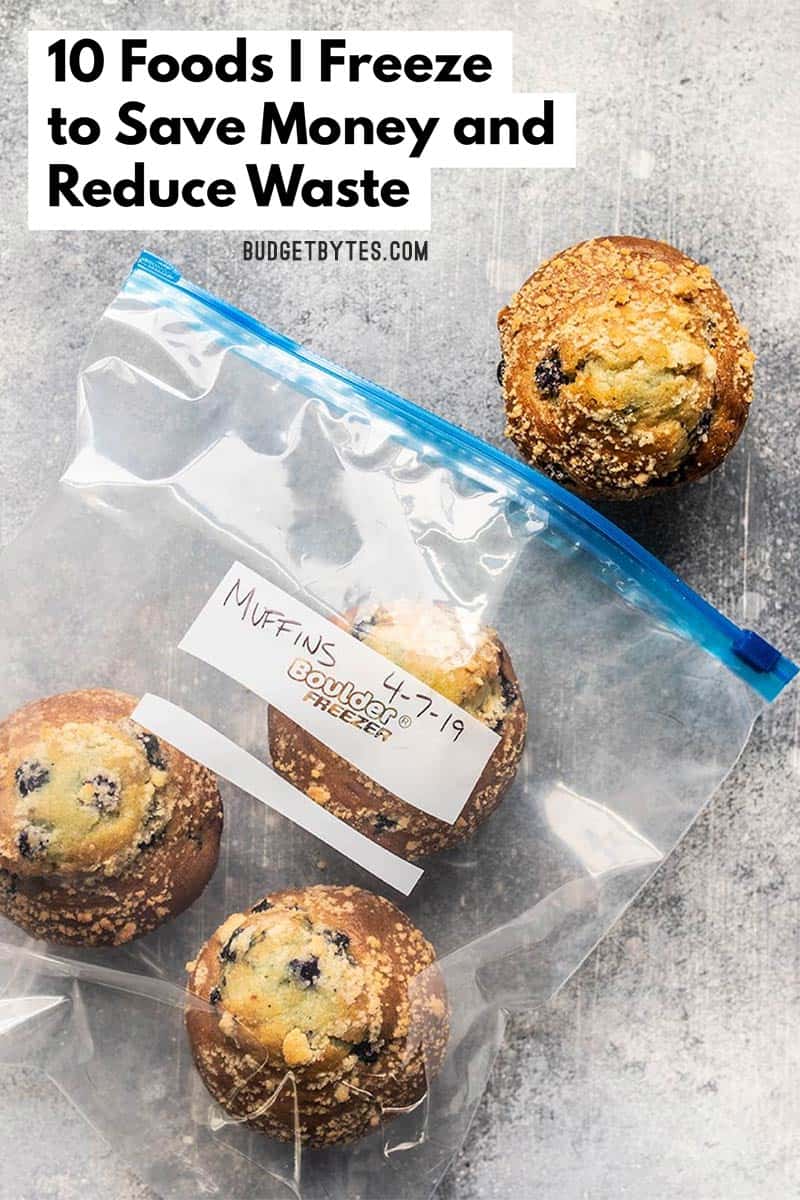
When I have herbs that are going south, I make compound butter by blitzing the herbs in the food processor with softened butter, citrus zest, garlic, citrus juice, etc. The butter I mold into a log, wrap tightly in waxed paper or plastic wrap, and put into a freezer bag. When I need compound butter to dot over fish, add to pasta or rice, melt over veggies, etc. I just take a log out of the freezer, whack off the amount I need, and store the rest.
All of these ideas I have used for years. Parsley is another item you can freeze and peppers. They take no prep though I usually cut my peppers so I can take out of the freezer what I need for the dish I am making
Chickpeas! I make a big batch on the weekend in the instant pot from dried. I then cool and separate into what is going in the fridge and the rest goes in little baggies in the freezer. For salads I might microwave for 30 seconds or if I’m making a salad to eat later I just throw in frozen.
I always use “Bouquet Garni” bundles (fresh herbs wrapped/tied in cheesecloth), when making soups and stews. It’s so much easier to retrieve a bundle from a recipe, than having to search for the herb stems.
To save prep time, I cut small portions of assorted fresh herbs (still on the stems) and wrap them in small cheese cloth bundles. The bundles are then tied with kitchen twine, placed in a gallon-size ziplock bag. All air is squeezed out before re-sealing the bag. I store the bag in the freezer door, for later use of the desired amount of bundles. Just drop the frozen bundle in the recipe and let the flavoring take its course. Storage takes up very little space and I always have fresh herb flavoring, year around.
My frozen bundles have retained natural flavoring for at least a year. In the next growing season, I discard any unused portions and replenish the supply with fresh herb bundles.
Written like a chef! I love that you freeze BG’s. xoxo -Monti
I always freeze Parmesan rinds for throwing in soup or pasta sauce, lemon, orange & lime zest, the dark parts of leeks for use in stock, soup, stew, chili etc, fresh Bay leaves, tomato paste, pureed (canned) chipotles, homemade applesauce, homemade simple fruit sauces, bananas for bread & muffins. I’ve got a drawer in my freezer dedicated to these “grab & cook” ingredients. I always have them on hand. I occasionally freeze homemade chickpeas in their cooking broth. Heck, sometimes I freeze just the broth from cooking them – it’s a delicious & inexpensive way to add flavour & stretch out my cooking stock. There are other things, but it’s late and I can’t remember any others! Lol!
Great suggestions here! Thank you!
Jodi, you are a cook after my own heart — so glad to have you in our community! These are all fantastic suggestions that I (and the rest of The B Team) do as well! ~Marion :)
I freeze milk products. Cream and half & half in ice cube trays to add to iced coffee or recipes; smaller portions of a gallon of milk since I rarely drink a gallon before it sours; buttermilk…
Love this tip! Thank you!
I freeze garlic. Have done so for years. Weirdly, I never see that tip anywhere, but it works.
To save freezer space, I usually zest lemons and limes, then juice them. I freeze the zest and the juice.
Any kinds of nuts or seeds and butter to avoid going rancid.
Since I’m usually only cooking for myself, I often have leftover chopped onions, etc. I freeze those. Not only are they not wasted, it saves me time later.
My use of ziplock bags has been drastically reduced. I use silicone bags and I also find they deter freezer burn better than the plastic bags. I do have a vacuum food saver that I use for meats if I expect them to be in the freezer for any length of time.
Whoa I’d never heard of freezing wine! You saved the best for last 🍷
I freeze bacon, black pudding slices, fried onions, home made ragu sauce, breadcrumbs, stuffing balls, chilies, pate, mozarrelo, butter and lots of bread products too!
I freeze nuts!! They are too expensive to go rancid!!
I freeze leftover fresh herbs. I cut up the herbs and put them in the ice cube trays and cover them with olive oil until frozen solid. I then move them to ziploc baggies or pint jars. Because oil melts at a lower temp than most other liquids, they require no thaw time and go directly into stir-fries, marinades, soup/stew/spaghetti sauce.
I chop and freeze peppers and onions for later use in chili, soups, etc. Bonus savings, by using reusable silicon bags or glass containers, I avoid continuously spending money on Ziploc bags.
I freeze SOS cleaning pads in zip loc bags after partial use.
Great idea! I have been cutting mine into quarters before using so I don’t waste them, but they are sometimes too small to handle. Freezing them seems like a better way to get full use out of them.
I did not know you can freeze citrus or cheese. This is mind blowing. Thank you, Beth, for continuing to educate me AND help me save money cooking :)
Stock/broth! We buy 32 oz cartons and lots of recipes call for 1-2 cups, so i freeze the rest in ice cube trays and put in a bag when frozen.
I often tell my customers to freeze my cupcakes if they don’t plan on eating them the day of. Freezing is a great way to extend the life of cupcakes, muffins, and other baked goods! Great article!
There’s nothing like freshly-baked chocolate chip cookies. I roll the dough into balls, freeze on a parchment-lined cookie pan and then pop them in a freezer bag. Then bake from frozen a bit longer.
YES. I have done this to save money & not be wasteful , maybe 30-40 years.
When cooking cauliflower cheese I usually put a portion or 2 in individual ramekins including topping with grated cheese and defrost as required then reheat in a hot oven tastes exactly the same .
I usually freeze fruits and vegetables. When summer gives you a bunch of fresh fruits and vegetables, freeze them to enjoy throughout the year. It’s simple! To keep the reward for the summer for many months. When freezing vegetables, first, for a short time, blanch them in boiling water. Then quickly immerse the vegetables in ice water to prevent them from cooking. Pack vegetables tightly to avoid contact with air.
Does anybody still keep “Soup Bowls?” My mom used to keep a sturdy bowl in the freezer and whenever she had small bits of leftover meat, broth, gravy, or veggies she would throw it in the soup bowl. After she had accumulated enough “goodies” she would use it all as a starter for her homemade vegetable soup. As a kid I didn’t think about it, but I realize now what an amazing opportunity this was to reduce waste and to ease up a tight grocery budget!
This is going to save me SOOOOO much money. Thanks for the tips!
Flour! Rice! Uncooked pasta! Since living in warm climates where things like these can get ‘buggy’ (weevils, seed moths), I got used to keeping these items in the freezer to foil pesky pests. Whole grain flours don ‘t get rancid, either.
Yes! Great tip Julia. Thanks for sharing.
Can you freeze baked oatmeal? For example your Peanut Butter Brownie or Apple Cherry Baked Oatmeal recipes?
Yes you definitely can!
I also freeze extra tomato paste, but I place it in a heavy duty qt. zip bag, spread out evenly, expel all air, seal. Then using a straight edge I score it into Tbsp-size squares which can be removed as needed. Takes up very little space in freezer door shelf.
Great tip Rob!
A vacuum bag sealing machine is a must for freezing stuff. The bags can be reused also, as well as most bags with frozen food can be resealed with the machine. I haven’t lost any cheese since I’ve had one, and I freeze lbs at a time. :)
Overripe bananas: smash them then put into freezer bags; they last a long time and are perfect for banana breads/muffins/cakes etc
Yes perfect!
Wow. Why didn’t I ever think of this? I’ve always waited for them to be brown then waited too long to use them once brown cause I was lazy, then tossed them lol….ugh all these tips I should’ve known. 🤦 I think we’re just so used to wasting food…
Why have I never thought to freeze tomato paste?!?!?!?! MIND BLOWN!
When I bake or buy cookies, I freeze them. Then I won’t eat an entire batch or package in one sitting. However many cookies are needed are pulled from the freezer and he rest returned . This ensures there’ll always be cookies for the rest of the family and guests. Still haven’t run across a cookie that doesn’t freeze well.
If gifted with a box of chocolates, say for my birthday or Christmas, it goes into the freezer. Then it’s used at a later time for a party or get-together (and I don’t Hoover the whole box).
I cook a whole pound of dried beans at a time, even though only a half cup of cooked beans might be needed. The rest of the cooked beans are portioned and frozen. Since I make chili using pintos (my family’s favorite) there are always cooked pintos in the freezer. Speaking of chili, I cook enough for several meals at one time, then portion and freeze the rest. There’s usually a few chili meals in the freezer.
Being Italian, I can only make a gigantic quantity of “Sunday gravy” for pasta. I can’t help myself. So when the massive quantify of sauce is cooked. I portion and freeze it. There’s always some in the freezer ready to go. I just pull out a container in the morning, put it in the kitchen sink,, and it’s usually thawed by dinnertime. I haven’t bought jarred sauce in almost 20 years.
Freeze single serving leftovers. You may not be able to face that leftover serving of tonight’s stew for tomorrow’s lunch, but next week it just might be calling your name. One less sandwich to pack or buy then.
I love loose tea rather than tea bags, but since I’m the only tea drinker in the house, the tea can go stale. Now when I buy a box of loose tea I freeze it until I need it. Once I fill my small tea jar, I put the rest in a plastic container or freezer bag and put it back in the freezer. Stays fresh for a long time!
Great tip!
Good Article
very nice
I freeze butter. I’ll buy more than one if they are on sale. There is no change in quality when thawed.
Excellent tip!
We save all of our bones in the freezer. Even steak bones. When we want to make broth we take them out and toss them in the crockpot.
Love this! I never would have thought of freezing wine! I also freeze the unused parts of carrots, celery, and onions (like the ends) in a bag; these accumulate quickly when following a lot of your recipes:). Then when I have a chicken/turkey carcass/bones, I add them to the crock pot to make broth. I also freeze the carcass (or bones of other meat) if I don’t plan to make broth right away.
Bananas for smoothies! Peel them, coat with lemon juice (I use my Misto to spray on Real Lemon.) Freeze on baking sheets (I freeze them whole.) They last at least a month.
I popped some lemons in the freezer last week (5 for $1, I couldn’t resist). I took out a lemon and used it with sea food two days ago. Game changer. I can’t wait to have fresh lime juice in the cocktails all year round.
Meat! I’m not sure if you left it off the list because it’s obvious, but it’s probably my favorite. Freezing meat allows me to have a variety of options on hand and take advantage of better deals with buying in bulk. I just bring it home and immediately separate it into individual pieces in bags and then put them all in a big bag to freeze.
Milk is a big one for us. I felt like I was always running to the store for a gallon. It freezes great and tastes the exact same when thawed. I would even say it lasts longer once it’s been frozen, though I haven’t tested it. Do be aware that it takes a few days for it to thaw when you stick it in the fridge. If you need it more quickly, a cold water bath will get it mostly thawed in a couple hours.
Lastly, breakfast foods. I know you mentioned baked goods, but specifically things like pancakes/waffles are great. Freeze in layers with wax paper between on a cookie sheet and then transfer to a bag after. Just pop them in the toaster for a quick delicious breakfast. We also make huge batches of breakfast burritos (like 30 at a time) and individually wrap them in aluminum foil before bagging them to freeze.
If I cook too much pasta (and sometimes I do on purpose!) I freeze serving size packages. When I want pasta quickly, say for lunch, I simply open a bag and run hot water over it (in the bag) and drain in a colander – then I can add fresh veggies, dressing and I have lunch.
I also keep a quart jar in the freezer and add the leftover spoon or so of veggies in their juice. When I make soup or stew, I thaw the jar/container and add those little bits of veggies.
When I freeze baked goods, I double bag them to keep from getting so many ice crystals on them. Since I live alone, a loaf of bread goes bad before I can eat it. So, I take zippered sandwich bags and put two slices in. Then I put all the slices back into the bread bag and freeze. Then I only have to take out 2 slices at a time.
Love his tip
In the summer we roast extra corn on the cob and slice it off the cob and into freezer bags for fall chowders. We never seem to get through a whole head of cauliflower before it starts getting those black spots, so I chop it up all at once and freeze half in a freezer bag for future soups or as an add in for baked macaroni and cheese. I freeze up leftover cooked bacon and cube up leftover ham for soups, flavoring beans, etc. We freeze chicken carcasses to make chicken stock. Or I make chicken stock right away after using up a roasted chicken, and then I freeze the broth itself. I freeze leftover pasta sauce to throw in minestrone. I freeze up veggie scraps such as onion skins and tops, carrot tops and peels, celery tops, zucchini ends, leftover bits of tomato, etc. until I have a big bag of scraps to make veggie stock.
Love the idea of freezing liquids and paste in an ice cube tray. I was curious if there’s a recommended size ice cube tray? It was only after I went to buy one that I realized how vastly ice cube trays vary in volume.
I think 2 Tbsp (1 oz.) is a good volume that offers a lot of flexibility when measuring the liquids later. :)
Nuts, poppyseeds and sesame seeds. All expensive, all take a long time to use, and all are susceptible to going rancid, depending on where you live (I’m a South Floridian). You can use them all straight from the freezer and they stay fresh practically forever in there.
I love all of these!! So awesome!
Oh and the comments too!
Peaches…who would have thought? love that!!
I always do berries – cherries, blueberries, strawberries, raspberries .. spread them on a tray lined with wax paper for 2 hours to overnight, then bag up so you can pour or grab whatever quantity you need.
SO much better than freezer section berries.
Do you have a list of things that don’t freeze well?
I don’t, since there is a lot of grey area. But in general, creamy sauces and soft, high water content vegetables are what you want to stay away from.
I save the meat drippings and freeze them. When I cook tri tip in the oven or any kind of chicken. Even if it’s just a tablespoon or two. It’s like concentrated bullion
When making a bean recipe, I’ll soak and cook at least twice as much as needed and freeze half. Really speeds up the time to make chili the next time. I also freeze chile peppers, chipotle in adobo, tomato sauce, broth, and all my soups and stews.
Also peaches! We live in Colorado, and I’ll buy a huge box of peaches in September when they’re super ripe. I briefly dunk them in boiling water then ice water to peel, slice them, lie them on parchment to freeze and then bag them up. Viola! Fresh sweet peaches all winter and SOO much better than what you can get in the freezer section.
I “grate” my fresh ginger in the food processor. Then I freeze it laid out as flat as possible on a cookie sheet. When it’s fully frozen, I break it up into pieces and pop it in a freezer bag. That way I can just pull out the amount I need.
I LOVE that food processor idea!!
Hello, i take big size marmelade jars, ut them into several tiny ones … so i always have avariety of many tastes :P
I also grate fresh parmesan quickly and put the result into a zipper bag. same procedure with fresh parsley: freshly washed, dried, cutted leaves -> ziper bag. Leftovers from sauces > small jars … slices of bread freezed for Toaster … whole butter bars (better would be pre-measured cubes/bars) … slices of cake for sudden teatime … never tried fresh eggs … will certainly try the ginger !!! thanx !!! Kisses !!!
I freeze heavy whipping cream in ice cube trays. Each cube is almost exactly two tablespoons. If you want to use it for actual whipped cream, you have to thaw it in the fridge, and shake/stir it back together as it will separate, but it will still whip up just fine. Even better sometimes because it’s so cold! It’s also super handy for those recipes that call for just a bit of cream – just toss a frozen cube right into the soup/sauce just like the tomato paste mentioned above!
More things I freeze as a single-person household, besides everything everybody else has listed … cookie dough balls (bake from frozen for a quick fix of fresh cookies; just add a minute or two to the bake time), pancakes (I thaw them slightly in the microwave before popping them in the toaster for a bit), nuts, butter, fruit (if I’ve missed them at their peak freshness, I might give them a quick roast and smash them down into a sort of sauce to use over ice cream or angel food cake or something … I can freeze them in ice cube portions).
Reducing waste in the kitchen… By employing use of a ton of disposable plastic. It seems a bit counterintuitive? I have a ton of glass storage (jars and glasslock) and silicone bags – one time investment and I’ve used them over and over again. Beeswrap is great for storage as well!
As a rookie lighthouse keeper stocking up our big pantry and deep freezer, I bought a 60 lb bag of non-fat dried skim milk powder ten years ago. Yes. A little overly enthusiastic about it but it was such a good deal! It has been in my deep freezer all this time, double-bagged in heavy-duty 6 ml plastic. It works wonderfully for baking and making yogurt (add 1 cup dry milk to 2 litres of regular 2% or homogenized full-fat milk for a good Greek-style yogurt). In a pinch, if our monthly grocery helicopter is weather-delayed, I use it for coffee but yech, it simply isn’t as good as liquid milk for something as important as first thing in the morning coffee!
I’ve also frozen liquid milk but the quality can suffer as sometimes, not always, it separates into cream and milk but give the carton a good shaking, and it works. It certainly works for making yogurt and cooking it.
The lemon and lime tip is brilliant!
50 years ago, my Mom bought #10 cans of tomato paste, divided it up and froze it. When quart size ziplock came out, she used them. It made about 10 tile shaped bags. Stacked easily in the freezer. She could break off chunks as she she needed them (soup, chili, sauce for noodles, rice, grains. And the savings on cost r huge.
I’ll just add canned chipotle peppers to this list. I freeze them just like I do tomato paste – little blobs of one or two peppers with a bit of the adobo sauce.
Deb G… I had no idea! Awesome tip, thx
Thank you for sharing the frozen citrus tip! I’ve frozen the juice, but I would never have thought to freeze the whole fruit! =)
I freeze whole blocks of Parmesan cheese!
We make a double batch of pancakes and waffles on weekends and freeze the extras for weekday breakfasts before school!
I have been stashing all kinds of vegetable trimmings and bones/chicken racks in the freezer for years. Once I have my big ziploc bag full I make up homemade stock which I then put in freezer containers and use as needed.
Do you have any suggestions for freezer storage that doesn’t involve plastic bags? I’m trying to cut down on plastic bag use because it’s such a waste and not environmentally friendly. I’ve frozen stuff in glass food storage containers before and they seemed okay.
I’m about to start using those re-usable silicone food storage bags (Stasher is one brand, but there are several available now). Many of them are dishwasher safe, so it makes them super simple to use and re-use. Several people have said they also freeze in beeswax wraps, but I haven’t tried that yet. Those tend to be slightly breathable, so it would probably only be best for shorter freezer storage.
Bananas. I freeze unpeeled bananas for baking.
I have frozen tomato products, canned chipotle peppers in adobo sauce, juices and fruit syrups, and egg whites. Egg whites I used to put into bags, but I was never sure how many I had. So now I freeze them individually in small round containers, and bag them later. For tomato paste, I use dehydrated tomato powder instead. Keeps for a LONG time in the fridge!
We have an upright freezer in our garage. I have a vacuum sealer and buy all kinds of meat on sale in bulk and freeze it. It also holds all kinds of frozen veggies and fruits. Vacuum-sealed meat keeps for a lot longer than meat frozen in ziplock bags.
I freeze buttermilk in an ice cube tray and either put the cubes in a container in the fridge a day ahead or if I don’t remember that, I defrost in the microwave before using. Works great!
Good night, this is a tectonic shift in my kitchen thinking! I freeze tomato paste and bread, but have been agonizing over wasted lemons, ginger and bagged spinach — it literally never occurred to me to throw those things in the freezer.
And hot dang I cannot WAIT to grate frozen ginger and not worry about the fibers! THANK YOU!
Thanks to Budget Bytes, (longtime fan!) I have been freezing so many things – grated citrus peel for soups and desserts (in the tiny sauce containers you get with takeout food), curry paste (again, in sauce containers or in a plastic wrap “sausage casing” of 1 Tblsp portions) homemade bulk items like stock, baked beans, leftover store bought spaghetti sauce, uncooked gnocchi and biscuits. Rotisserie chicken carcasses for making stock!
I work full time and have two young kids, so your site and our deep freezer are invaluable assets. Thank you so much for all the time and effort you put in to your recipes and your site.
An excellent post and I hadn’t thought of freezing spinach, great idea. I use my freezer a lot and living in the tropics also freeze Turmeric, nuts, egg whites in portions of 4-6, passion fruit in ice block cubes, so msny things really. Thanks for sharing, Pauline
I have been using your frozen citrus advice and it is a game changer! I now just buy a bag of lemons or limes and aldi for super cheap and always have them when I need them. Thanks so much for your tips!
Great ideas! I have one. I freeze chicken bones, celery leaves, and onion peelings. When I have enough to fill a crock pot, I put them together with water and cook on low for 24 hours or more to make bone broth. Then I fill cupcake pans 1/3 full and freeze then store in a plastic bag. Very handy to through frozen into a dish I’m sauteing that calls for chicken broth or water or just heat in a mug for a nutritious snack.
wow….great information! Things I never knew….
Broccoli! It becomes soggy when thawed but is perfect for soup. Any of these veggies can be bought when they are marked down for being too close to their expiration date for even more savings!!!
I recently went on a trip and froze ginger and while limes. Thanks for that trip Beth!
I also happened to have leftover cooked potatoes dry curry with arugula that I make for a quick veggie sides for dinner often. I didn’t have the heart to throw that so I just froze that. Upon returning after 10 days I just thawed it in my fridge and used it to make stuffed potato sandwiches with cheese for lunch for the whole family. No one could tell the difference! I didn’t know that you can freeze cooked potatoes too!
Great post! Thank you for sharing! I will definitely try the tomato paste in small portions in the freezer, in addition to the citrus too. Many times I have needed a lemon or lime and not had one. I also make Marinara sauce and put it into glass Ball jars and freeze. It works really well. I also freeze ground hamburger. I buy 3 pounds, cook all 3, use one for dinner and freeze the other two.
I like to take the remainder of a tomato paste can and put it into a zipper plastic bag. I squeeze out the air and flatten it. Once it’s frozen flat, I break off a chunk when I need it. Saves on freezer space too because it’s flat!
I also freeze herbs like parsley, thyme, and chives. I clean and chop them, then into a zipper bag flat. After frozen, I add them to soup or potato salad. No difference in color or flavor. Super convenient! The thyme is frozen, after washing, on the stems. Many times the leaves just fall off, but I tie a cotton kitchen twine around the stems and throw it into soup or sauce and fish out the stems later.
I also flavor my homemade stock with the parsley stems (after I’ve chopped the leaves for freezing!). They’ve still got a lot of flavor and are strained out of the stock when it’s finished.
I was familiar with some of these tips, but others were real surprises. I had no idea about spinach or wine. I don’t drink liquor for religious reasons, but we are allowed to cook with it. The problem is, of course, after you make a dish, what do you do with the leftover wine if you aren’t going to drink it? Now I know! I’m also guilty of dead spinach in the fridge and had just about stopped buying it, but will happily freeze it from now on.
Anyone can benefit from these tips, but as a single person, they are especially helpful to avoid wasting food.
I get an abundance of fresh lemons each year so I juice them and freeze in ice cube trays and store cubes in large plastic container. When I want fresh lemonade, put about 11 cubes in half gallon container and about 1 cup of sugar (or to taste) and fill with water. Fresh lemonade all year long!
I freeze dark chocolate bars. It forces me to be much more mindful about whether or not I actually want to shove a piece of chocolate in my mouth! Moonstruck is made in my town (Portland), I’m perhaps a little addicted to their dark chocolate, and occasionally I stumble on a sale. Putting those bars in the freezer really extends my snacking intake and lowers my chocolate spending.
Homemade pizza dough! I have a yeast recipe that requires two rises. It allows for the 2nd rise to be done overnight in the fridge. However, I’ve had huge success in dividing the dough after the first rise into single pizza size portions, putting the pieces in a zip lock bag and freezing for up to 3 months. (I also freeze many of the potential toppings & sauces in those mini zip lock bags) When ready to use, thaw dough in the fridge overnight in a covered bowl. along with preferred toppings & or sauces in their bags. The 2nd rise will amazingly occur during the thaw time. Then you’re all set to go! Back pizza’s as usual!
I usually make a double batch of dough so that I can have multiple sized pizza dough portions in the freezer, but the individual size works best for me most of the time. You can have at least once pizza immediately! (errr….overnight) Yummmm!
I love all these tips! I’ve already been doing some of them, including tomato paste, pesto, citrus, and baked goods. I hadn’t thought of wine or spinach though. That’s genius! I also like the tips mentioned in the comments, especially veggie scraps.
Just about everything. I have a foodsaver so I don’t worry so much about freezer burn. Leftovers, I often freeze, vac seal and then on nights when I don’t have time to cook I can toss the bag into a pot of boiling water and heat it that way, easy clean up too. I’ll be attempting this with your pesto stuffed shells recipe this week.
I also freeze a lot of fruit. Especially when berries are on sale, I will freeze them in small batches for smoothies, syrups and quick jam.
Caramalized onions! And waffles! And soooooo many soups.
Wonderful tips. I already do some of this–have been freezing cheese for decades. Since I love good bread, but don’t eat much of it, the first thing I do is divide a loaf in 2-4 parts and package about 6 slices per baggie and freeze all but the one i want to gobble up. I never thought of the tomato paste trick, and will immediately add it to my bag of secrets. Also love the ginger thing. I usually peel ginger and stick it in a jar and cover with sherry–since so many recipes that use fresh ginger also want a splash of wine, this works for me. I never thought of the tomato paste trick, so thanks tons for that. I almost never use up one of those little cans, although I do freeze anchovies since I never use more than a couple at a time. The pesto and spinach tricks are new to me, too–and very welcome!
I often make mirepoix in decent quantity and freeze it–my other trick for this every useful soup/casserole/stew component is to saute the veggies in bacon fat–an added bit of flavor in nearly every soup. We eat very little bacon, but that grease is too full of flavor to ever discard and is a lovely substitution to other fats in things like corn bread.. My other veggie thing is more texmex–onions, bell peppers, chili peppers–same treatment. I did know about the wine ice cube thing, but rarely am in a situation where I don’t use up a bottle within a few days;)
Thanks for more tricks that not only save money, but expand my pantry options
I always freeze muffins for lunchboxes. After they’re completely cooled, I wrap each muffin in plastic wrap, then store the muffins in a gallon ziplock bag. When I pack lunches, it’s easy to grab however many muffins I need and toss them into the lunchboxes (no need for extra wrapping, of course, since they’re already wrapped). The same can be done with unfrosted bar cookies, such as brownies and blondies.
I freeze basil and then just crumble up the frozen leaves to sprinkle on pasta sauces or mix into Thai chicken, etc. I also make a big pot of beans and then freeze them for quick meals later. Partial cans of coconut milk or chipotle peppers, etc. I buy a bag of chili peppers and throw them in the freezer. You can chop them up easily while they’re still frozen.
I freeze whole tomatoes, when they are in season & cheap or when I get a glut from my garden. They’re great for making sauces & soups. Run them under the hot tap for a second while still frozen & the skin come right off, then add them to my pasta sauce I’m making to fall apart into a lovely tomato sauce. If you don’t want seeds, thaw & chop them first or run them through a food mill.
Chocolate chips, nuts, and brown sugar. when you freeze brown sugar it doesn’t get lumpy, and thaws very fast when you need it. Tortilla shells also freeze well, if you use a kind that tend to stick together, you may want to separate before freezing, otherwise they can be impossible to get apart.
Nuts, sesame seeds, and coconut flakes! They go rancid in the pantry but last forever in the freezer. And you can just throw a handful into whatever baking/stirfry/smoothie you’re making.
I came to say what Tarah did: veggie scraps and chicken bones for soup stock! The skin of onions gives the stock a rich brown color. In addition to what has already been mentioned: the dark green part of leeks as well as any fresh herbs that are starting to go bad. I usually have two or three quart-sized Ziploc bags of scraps/bones in my freezer at any given time to make stock with. Just add water and let it simmer all day, strain out the boiled gunk, and voila! Stock you can use right away, put in freezer bags for later, or pour into ice cube trays.
I freeze frosted cupcakes. I can’t tell them apart from fresh.
Never would have thought of ginger or lemons/limes – genius!
I freeze avacados with lime juice for making guacamole since my style of guac is more mashed than chunk. They’re very expensive here in MN
We freeze veggie scraps to make stock later. I keep a gallon bag in the freezer so I can just throw in the carrot ends, celery leftovers, onion ends, tiny garlic cloves that I won’t use, asparagus trimmings, mushroom stalks, and broccoli stalk ends. If you have chicken bones, I combine that with the veggie scraps to make bone stock. It’s easy and practically free.